11 Types of Fans to Move Air Through Your Room Just Right
Author: Rick Worst | Editor: Omar Alonso
Review & Research: Jen Worst & Chris Miller

Summers in the United States can be hard to deal with—and that’s an understatement! The dog days of summer are best dealt with air-conditioning, but if you’ve got neither the budget nor the will to harm the environment even more than we already have, one of the types of fans are your best bet.
Fans have been around and remained relevant for ages, becoming a staple of everyday life around the world. Air-conditioning units are used by 90% of the American population, but the high electricity bills have an increasing number of folks becoming fans of fans.
Additionally, air conditioners, since they run on fossil fuels, emit a ton of carbon. They’re not very energy-efficient either—A/C units use around 3000-5000 watts of power a day, costing you at least 40 cents an hour to run.
11 Types of Fans
If you’re considering investing in a fan for the house, good on you. Here’s a list of the different types of fans available that are all great alternatives to central air, to make the task of picking one out easier.
Ceiling Fans
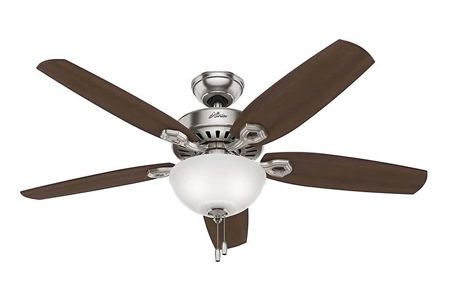
Dating back to 500 BC India, ceiling fans are the most commonly used fans around the world and as the name suggests, are affixed to your ceiling. While this fan’s ancestors were manually run with a cord and later, with streams of running water (rotary fans in 1870s’ United States), today’s descendants (thankfully) run on electricity.
These fans are good for evenly spreading air around the room, thanks to the rotating hub that they’re mounted on that helps with the circulation. Additionally, these fan types are generally suspended from the very middle of the room/ceiling, which means that there is an equal transfer of air in the entire room.
Ceiling fans are great for both cooling and heating, thanks to the reverse-mechanism that they’re equipped with to enable air direction. Average ceiling fans can move around 4,000 cubic feet of air per minute (CFM), while the strongest can move around 10,000 CFM. And that's if they're balanced. Otherwise they'll rock back and forth, make clicking noises, and other problems.
Window Fans
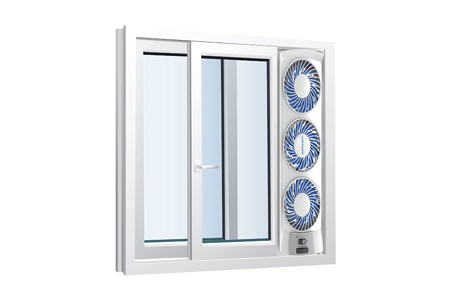
Window fans, as the name suggests, are designed to fit into the window frame and though also used in bedrooms, are most commonly used in kitchens and bathrooms as both cooling devices and exhaust fans. If you have a windowless kitchen you can opt for a ceiling fan in the kitchen instead.
Window fans or axial fans, generally have two individual fans with which they cool the room—one pulls in cool air from outside and distributes, while the other works as an exhaust fan, expelling hot air from the room to the outside.
Window fans can have one, two or three blades and high-end window fans even come with an automatic feature that allows both fans to work at the same time.
In addition to being quiet, energy efficient and low maintenance, window fans are highly space efficient, which is their USP.
However, these types of fans can also suck in pollutants from outside, which makes them quite a double-edged sword.
Table Fans
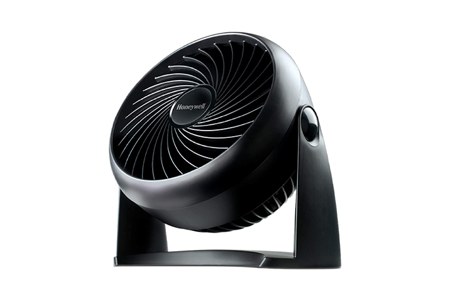
Another very commonly found variant, table fans are all kinds of convenient, portable and compact.
These can be placed anywhere that’s flat, firm and solid and are the preferred choice for many folks—also because they’re extremely economical (both in terms of needs and price), durable and flexible in usage.
Table fans come equipped with a running motor unit and run on electricity. One of the biggest draws of these fans is the fact that they ventilate in a horizontal manner, enabling a wider reach and more equal air distribution than other fans.
Another draw is the gadget control they come with. Many companies offer table fans with their own remote controls, helping you regulate air speed and direction.
Given their popularity and easy nature, these fans are always being upgraded to be more convenient and easy to use, so finding one that perfectly fits your needs is quite easy.
Pedestal Fan
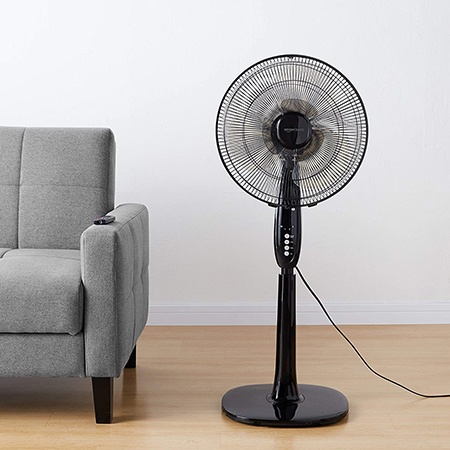
Pedestal fan types, also known as ‘stand fans’, are extremely popular for their versatility and powerful cooling capacity.
These oscillating fans are mounted on detachable stands that allow you to adjust the entire setup according to your requirements.
Pedestal fans are quite tall but not bulky, which makes them easy to move around. They’re also extremely lightweight, which further increases their portability.
All you need is a socket to run these fans, unlike ceiling fans. The in-built oscillation ensures that these fans distribute and transfer air to the maximum possible extent.
Like table fans, pedestal fans also come with remote controls that let you control the air’s direction and speed without so much as moving a finger—or only moving a finger, as the case may be.
However, with large bases and large heads, these types of fans can take up a fair bit of space in the room.
Exhaust Fans
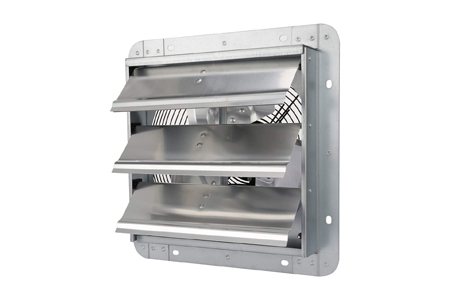
What’s a bathroom without exhaust fans? Probably smelly, but the point we’re trying to make is that exhaust fans are most commonly used in bathrooms to provide ventilation, prevent the build up of excessive heat and keep the air pure and pollutant-free.
Exhaust fans run on electricity and have blades that rotate at very high speeds.
This speed is what sucks out all the hot air from the room and releases it outside, allowing cool, fresh air to flow in, instead. Due to this, exhaust fans are also extremely common (and a necessity) in kitchens.
High-end models of exhaust fans contain thermostats to help regulate temperatures inside the room. These are different kinds of fans in that they pull air out instead of blow it around.
Tower Fans
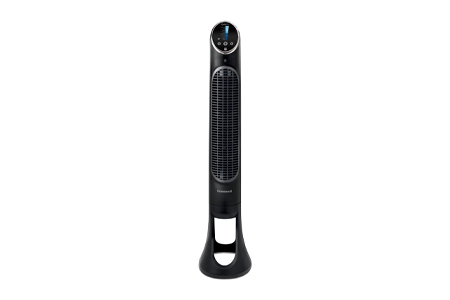
Tower fans are like towers—narrow, tall, compact and sleek. These tall fans are mounted on rotating bases to ensure air distribution on all sides, with in-built ionizers to purify the air that comes out of them.
Tower fans have inlets on their sides that let them suck in air from outside and release this after purifying and cooling it. These fans cover large areas, owing to the fact that they’re designed to blow air at a 90-degree angle.
Though quite similar to air coolers in appearance, tower fans are more energy efficient and circulate only the air that’s indoors (air coolers, ironically, don’t cool air; they just encourage airflow).
Tower fans, due to their vertical nature and compact bases, are among the most space efficient, portable and lightweight of fan types.
Wall-Mounted Fans
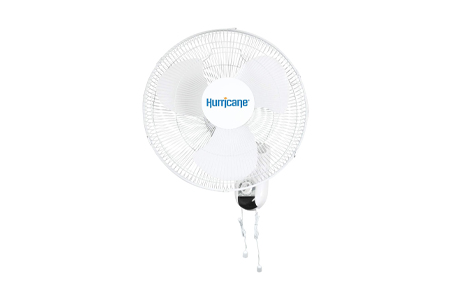
What do you do when you don’t have space on your floor for a fan? You put one on your wall.
Wall-mounted fans are extreme space savers, designed to be compact and fit in tiny spaces regardless of the ceiling height, making them the perfect ceiling fan alternatives. They’re also great options to consider when there aren’t any proper wiring facilities available.
Wall-mounted types of fans function differently from ceiling fans, simply pushing air in the room/space where they’re installed, as opposed to pushing air down and circulating it, as ceiling fans do.
These fans are great in a range of settings, from warehouses to auditoriums to huge party halls to small offices. Sometimes, these fans are used in conjunction with various types of air conditioners as they circulate the air conditioning super efficiently.
In addition to their efficiency in both functioning and space saving, these fans also feature multiple speed settings, remote control options, the ability to oscillate and are durable, lightweight and portable in nature.
Misting Fans
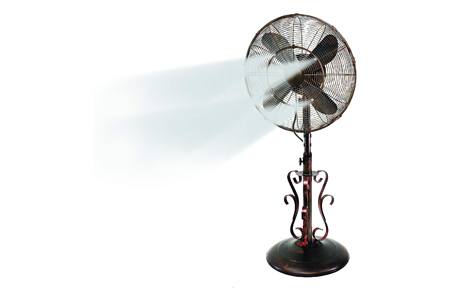
What do you do when an air conditioner can’t be friends with your budget? You buy a misting fan.
Misting fans create and spray mist, thanks to an in-built high-pressure pump that squirts water out from an attached supply of water.
This mist is then circulated around the room by the fan/blower part of the contraption, making them a super-efficient way to cool off in high temperatures, both indoors and outdoors.
The mist that these fans produce is extremely light, so you don’t go from being drenched in sweat to being drenched in water. The mist is so fine that you won’t feel anything on your skin or your clothes.
Additionally, these fans are more energy efficient than air conditioners, using only around 30 watts or lesser, compared to 900 watts used by the latter. Cooling? Check. Money and energy saved? Check. Two birds with one stone? Check and check.
Bladeless Fans
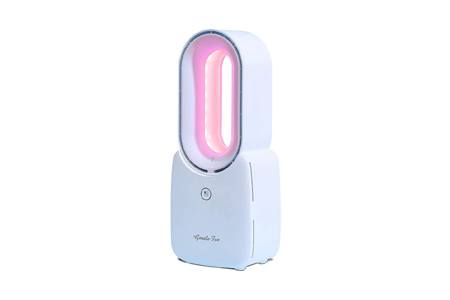
A bladeless fan? Is that even possible? Meet bladeless types of fans, also known as air multipliers. These fans suck in air through holes situated on their bases, after which they flatten the air and push it out through narrow slits situated on their circular upper bodies.
The absence of blades makes these fans extremely safe for tiny tots (both the human and furry varieties), while the fact that they use around 40 watts or less makes them energy efficient. However, they can be quite an expensive investment.
Industrial Fans
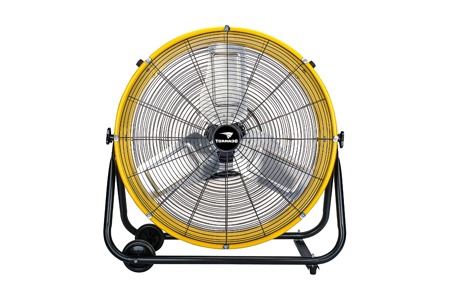
Industrial fans or industrial blowers enable continuous airflow that is used for a range of purposes such as ventilation, aeration, exhaust, cooling and air cleaning, to name a few.
Due to rotating blades powered by a motor turbine, these fans are extremely powerful. There are two main types of industrial fans—centrifugal (also known as ‘squirrel cage’ or ‘scroll fans’ and axial fans.
Floor Fans
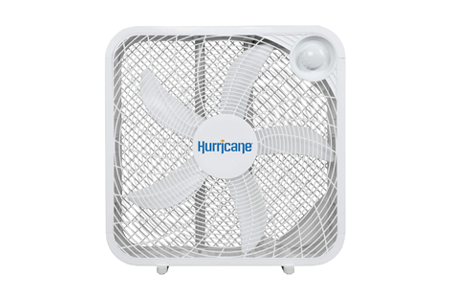
Floor fan typess are kept on the floor (duh!) and are used to cool air at the floor level. Floor fans are great for hothouses and are very convenient as they can be placed anywhere required.
They don’t require any permanent installation either, unlike ceiling fans, wall-mounted fans, exhaust fans and the like. This makes them more versatile. In my youth, I had one of these blowing air across me all night since my bedroom was the hottest in the house. They saved my sanity, honestly.
Since these fans are characterized by the fact they cool air at the floor level, any fan that does this can be considered a floor fan.
Types of Fans for Every Room & Air Flow Need
Fans can exist in many forms, as you’ve already just seen. However, the basic aim of any fan is to keep things cool, so don’t let the many types overwhelm you when you have to pick out a fan for yourself—any fan that you pick will achieve this.
If you’re really particular about the different types of fans you’re getting, keep in mind factors such as the number of blades, electricity consumption, your budget and the space where you’re going to position it—it’ll narrow down the options and make your job much easier.



